Global Warming Speech for Students and Children
3 minutes speech on global warming.
Global Warming is definitely the single greatest environmental challenge that the planet earth is facing at present. It is essential to understand the gravity of the situation. The fuel which you use in order to power your homes, cars, businesses and more is heating up the planet faster than expected. We are recording the hottest days and decades ever. What’s alarming is that the temperature of the earth has climbed to the highest point it has ever been in the past 12,000 years. It only gets worse from here if we don’t stop it now.


Impact of Global Warming
As the planet is getting hotter, we need to collectively act right now instead of waiting for more. The primary cause of global warming is fossil fuels. Human beings are addicted to burning them which produces coal, oil, greenhouse gases and more.
The power plants, cards, and industries produce Carbon dioxide which stays in the atmosphere for 5 decades or more. This is the reason why the temperature of the earth rises.
Due to this rise in temperature, the oceans are rising and the coral reefs are dying. Many aquatic species are going extinct while the glaciers are melting. You will be surprised to know that Greenland is losing 20% more mass than it receives from new snowfall.
Thus, it will keep shrinking as the earth warms. Moreover, extreme weather patterns are for everyone to see. The heatwaves, droughts, floods, are now taking place with greater intensity and frequency.
The hurricanes are doubling up in nature in terms of occurrence and the Katrina Hurricane is enough to prove this point. Further, the Greenland and Western Antarctic ice sheets are at great risk of melting completely. Please note that these two ice sheets presently hold around 20% of the Earth’s freshwater. The rise in sea levels will damage the coastal areas globally. Moreover, the regularity of hurricanes, tornadoes, and others may become more volatile spreading malaria and other deadly diseases.
Get the Huge list of 100+ Speech Topics here
Ways to Tackle Global Warming
The time is now to do something to prevent global warming, otherwise, it will be irreversible. Electricity and transportation contribute largely to global warming, so we must begin there. It is important to note that there is no silver bullet and we must all come together to tackle global warming as a whole. Every home, business, industry, individual effort is required to tackle this crisis.
As coal produces tons of Carbon dioxide annually, we need to find ways to clean up coal. We can also tackle global warming by beginning with putting agriculture in the system. We must encourage farmers to adapt to greener farming practices. For instance, they must till land less often, and plant trees on vacant land.
Moreover, the same regime needs to be applied to other industrial producers of carbon dioxide. For instance, the transportation industry of cars, trucks, planes and more produce 28% of the carbon dioxide emissions. Thus, we must reduce these emissions by enhancing the fuel efficiency of the vehicles. Also, it is high time we got rid of oil and gasoline-based fuels and opt for greener alternatives.
On an individual level also, we must work to adopt a greener and healthier lifestyle. Try to drive less and walk more or take public transport. Get into the habit of recycling and avoid unnecessary wastage of goods. Save electricity by switching off appliances when not in use. Most importantly, plant a tree as a single tree can absorb one ton of carbon dioxide in its lifetime. Thus, remember, the change begins with you.
Read Essays for Students and Children here
Customize your course in 30 seconds
Which class are you in.

Speech for Students
- Speech on India for Students and Children
- Speech on Mother for Students and Children
- Speech on Air Pollution for Students and Children
- Speech about Life for Students and Children
- Speech on Disaster Management for Students and Children
- Speech on Internet for Students and Children
- Speech on Generation Gap for Students and Children
- Speech on Indian Culture for Students and Children
- Speech on Sports for Students and Children
- Speech on Water for Students and Children
16 responses to “Speech on Water for Students and Children”
this was very helpful it saved my life i got this at the correct time very nice and helpful
This Helped Me With My Speech!!!
I can give it 100 stars for the speech it is amazing i love it.
Its amazing!!
Great !!!! It is an advanced definition and detail about Pollution. The word limit is also sufficient. It helped me a lot.
This is very good
Very helpful in my speech
Oh my god, this saved my life. You can just copy and paste it and change a few words. I would give this 4 out of 5 stars, because I had to research a few words. But my teacher didn’t know about this website, so amazing.
Tomorrow is my exam . This is Very helpfull
It’s really very helpful
yah it’s is very cool and helpful for me… a lot of 👍👍👍
Very much helpful and its well crafted and expressed. Thumb’s up!!!
wow so amazing it helped me that one of environment infact i was given a certificate
check it out travel and tourism voucher
thank you very much
Leave a Reply Cancel reply
Your email address will not be published. Required fields are marked *
Download the App

Talk to our experts
1800-120-456-456
- Climate Change Speech/Global Warming Speech

Download Long and Short Climate Change Speech Essay in English Free PDF from Vedantu
Earth is the only planet which has variety in weather and climate crucial for survival. But we humans are killing nature to fulfil our need and greed that causes global warming, eventually leading to climate change. Here, we have provided both long and short Climate Change speech or Global Warming speech along with 10 lines for a brief speech on Global Warming. Students can refer to this article whenever they are supposed to write a speech on Global Warming.
Long Global Warming Speech
Global Warming refers to the Earth's warming, i.e. rise in the Earth's surface temperature. A variety of human activities, such as industrial pollution and the burning of fossil fuels, are responsible for this temperature rise. These operations emit gases that cause the greenhouse effect and, subsequently, global warming. Climate change, starvation, droughts, depletion of biodiversity, etc. are some of the most important consequences of global warming.
The average surface temperature of the planet has risen by around 0.8 ° Celsius since 1880. The rate of warming per decade has been around 0.15 °-0.2 ° Celsius. This is a worldwide shift in the temperature of the planet and should not be confused with the local changes we witness every day, day and night, summer and winter, etc.
There can be several causes for Global Warming, the GreenHouse Effect is believed to be the primary and major cause. This impact is caused primarily by gases such as carbon dioxide, methane, chlorofluorocarbon, nitrous oxides, etc. In the atmosphere around the Earth, these gases form a cover from which the Sun's hot rays can penetrate the Earth but can not leave. So, in the lower circle of the Earth, the heat of the Sun persists, allowing the temperature to increase.
This is not something new, it is not something we weren’t aware of before. Since childhood, each one of us present here has been made to write a speech on Global Warming in their school/college, at least once. We have been made aware of the disastrous effects through movies, articles, competitions, posters, etc. But what have we done? Recently, the Greta Thunberg's Climate Change speech was making headlines. Greta Thunberg is a 16-year-old teenager who got the chance to speak at the United Nations Climate Action Summit. Although, most of us were quick to term Greta Thunberg Climate Change speech as ‘Scathing’ but very few could point out the need for such a brutal reminder. Remember? “We have been made to write a speech on Global Warming since our school days and nothing changed”. Maybe a searing reminder would bring a change and yes, it sure did.
Now, we have the titanic fame, Leonardo DiCaprio, speaking up about climate change in his Oscar speech as well as at the UN. However, Leonardo Dicaprio's Climate Change speech makes us aware of the fact that this has grown beyond individual choices. If we have to fight climate change, industries and corporations have to take decisive large-scale action.
I would like to end my speech by saying that only spreading awareness isn't the answer. It's time to act, as actions yield results.
Short Speech on Global Warming
Today, I am here to deliver a short speech on Global Warming. We all are well aware of Global Warming and how it results in Climate Change. Owing to global warming, there have been cases of severe drought. Regions, where there used to be a lot of rainfall, are seeing less rainfall. The monsoon trend has shifted around the globe. Global warming also causes ice to melt and the level of the ocean to rise, resulting in floods.
Various species are also widely impacted by global warming. Some land organisms are very vulnerable to changes in temperature and environment and can not tolerate extreme conditions. Koalas, for example, are at risk of famine because of climate change. Several fish and tortoise species are susceptible to changes in ocean temperatures and die.
One of the biggest threats to global security is climate change. Climate change knows no borders and poses us all with an existential threat. A significant security consequence of climate change is a rise in the frequency of severe weather events, especially floods and storms. This has an effect on city and town facilities, access to drinking water, and other services to sustain everyday life. It also displaces the population and since 2008, disasters caused by natural hazards have displaced an average of 26.4 million people annually from their homes. 85% of these are weather-related. This is equal to every second of approximately one person displaced.
It is important that we finally stop debating about it. Schools need to stop making students write a speech on Global Warming or Climate Change and focus on making them capable of living a sustainable life. Face it with courage and honesty.
10 Lines for Brief Speech on Global Warming
Here, we have provided 10 key pointers for Climate Change Speech for Students.
Global warming refers to the above-average temperature increase on Earth.
The primary cause of global warming is the Greenhouse effect.
Climate change is blamed for global warming, as it badly affects the environment.
The most critical and very important issue that no one can overlook is climate change; it is also spreading its leg in India.
India's average temperature has risen to 1.1 degrees Celsius in recent years.
Living creatures come out of their natural environment due to global warming, and eventually become extinct.
Climate change has contributed to weather pattern disruptions across the globe and has led to unusual shifts in the monsoon.
Human actions, apart from natural forces, have also led to this transition. Global warming leads to drastic climate change, leading to flooding, droughts and other climate catastrophes.
The pattern of monsoon winds is influenced by changes in global temperature and alters the time and intensity of rain. Unpredictable climate change impacts the nation's farming and production.
Planting more trees can be a positive step in eliminating the global warming problem.
What is Climate Change?
Climate change refers to alterations in Earth's climate, it has been happening since the planet was formed. The Climate is always changing. There are different factors that could contribute to Climate Change, including natural events and human activities.
Factors that cause Climate Change
The sun’s energy output
Volcanic eruptions
Earth’s orbit around the sun
Ocean currents
Land-use changes
Greenhouse gasses emissions from human activity
The most significant factor that contributes to Climate Change is greenhouse gasses emissions from human activity. These gasses form a “blanket” around Earth that traps energy from the sun. This trapped energy makes Earth warm and disturbs the Earth’s climate.
The Impact of Climate Change
Climate change is already happening. It is causing more extreme weather conditions, such as floods and droughts.
Climate change could lead to a loss of biodiversity, as plants and animals are unable to adapt to the changing climate.
Climate change could also cause humanitarian crises, as people are forced to migrate because of extreme weather conditions.
Climate change could damage economies, as businesses and industries have to cope with increased energy costs and disrupted supply chains.
Here are some Tips on How to write a Speech on Climate Change:
Start by doing your research. Climate change is a complex topic, and there's a lot of information out there on it. Make sure you understand the basics of climate change before you start writing your speech.
Write down what you want to say. It can be helpful to draft an outline of your speech before you start writing it in full. This will help ensure that your points are clear and organized.
Be passionate about the topic. Climate change is a serious issue, but that doesn't mean you can't talk about it with passion and enthusiasm. Let your audience know how important you think this issue is.
Make it personal. Climate change isn't just a political or scientific issue - it's something that affects each and every one of us. Talk about how climate change has affected you or your loved ones, and let your audience know why this issue matters to you.
Use visuals to help explain your points. A good speech on climate change can be filled with charts, graphs, and statistics. But don't forget to also use powerful images and stories to help illustrate your points.
Stay positive. Climate change can be a depressing topic, but try not to end your speech on a negative note. Instead, talk about the steps we can take to address climate change and the positive outcomes that could come from it.
Start by defining what climate change is. Climate change is a problem that refers to a broad array of environmental degradation caused by human activities, including the emission of greenhouse gasses.
Talk about the effects of climate change. Climate change has been linked to increased wildfires, more extreme weather events, coastal flooding, and reduced crop yields, among other things.
Offer solutions to climate change. Some solutions include reducing our reliance on fossil fuels, investing in renewable energy sources, and planting trees to help absorb carbon dioxide.
Appeal to your audience’s emotions. Climate change is a problem that affects everyone, and it’s important to get people emotionally invested in the issue.
Make sure your speech is well-organized and easy to follow. Climate change can be a complex topic, so make sure your speech is clear and concise.

FAQs on Climate Change Speech/Global Warming Speech
1. What should be the main focus of my speech? Can I use statistics in my speech?
The main focus of your speech should be on the effects of climate change and the solutions we can enact to address it. However, you can also talk about your personal connection to the issue or how climate change has affected your community. Yes, you can use statistics to support your points, but don’t forget to also use images and stories to help illustrate your points.
2. How much should I talk about the potential solutions to climate change?
You should spend roughly equal time discussing both the effects of climate change and potential solutions. Climate change is a complex issue, and it’s important to provide your audience with both the facts and potential solutions.
3. Can I talk about how climate change has personally affected me in my speech?
Yes, you can talk about how climate change has personally affected you or your loved ones. Climate change is a serious issue that affects everyone, so it’s important to get people emotionally invested in the issue.
4. Are there any other things I should keep in mind while preparing my speech?
Yes, make sure your speech is well-organized and easy to follow. Climate change can be a complex topic, so make sure your speech is clear and concise. Also, remember to appeal to your audience’s emotions and stay positive. Climate change can be a depressing topic, but try not to end your speech on a negative note. Instead, talk about the steps we can take to address climate change and the positive outcomes that could come from it.
5. Where can I find more information about preparing a speech on climate change?
The best place to start is by reading some of the reports from the Intergovernmental Panel on Climate Change (IPCC). You can also find helpful resources on the websites of Climate Reality Project or Greenpeace.
6. How long should my speech be?
Your speech should be between 5 and 7 minutes in length. Any longer than that, and your audience will start to lose interest. Climate change can be a complex issue, so it’s important to keep your points brief and concise. If you need help organizing your speech, consider using the following outline:
Define what climate change is;
Talk about the effects of climate change;
Offer solutions to climate change;
Appeal to your audience’s emotions.
7. How can I download reading material from Vedantu?
Accessing material from Vedantu is extremely easy and student-friendly. Students have to simply visit the website of Vedantu and create an account. Once you have created the account you can simply explore the subjects and chapters that you are looking for. Click on the download button available on the website on Vedantu to download the reading material in PDF format. You can also access all the resources by downloading the Vedantu app from the play store.
What do you think? Leave a respectful comment.

Nsikan Akpan Nsikan Akpan
- Copy URL https://www.pbs.org/newshour/science/how-to-talk-to-your-kids-about-climate-change
How to talk to your kids about climate change
There is a playbook for how to talk to children following a major tragedy like a mass shooting so that they can start to cope without being traumatized: be honest, no matter how young; don’t be too graphic; and emphasize their support networks.
These same rules apply to how we talk to children about the climate crisis. Young activists including 16-year-old Greta Thunberg of Sweden dominated news coverage during the U.N. summit and strikes across the world last week, but discussing global warming can be complicated because of the immediate and long-term anxieties surrounding the climate crisis. And kids can be affected even when they aren’t direct victims of a weather incident.
“I look at it through two lenses,” said pediatrician Samantha Ahdoot, a lead author of the American Academy of Pediatrics policy statement on Global Climate Change and Children’s Health. “Through the mental health consequences of extreme weather events, and through the effects of living in a world that is changing and the fear that it invokes in children.”
Thanks to decades of research , it is clear now that environmental disasters, like hurricanes and wildfires, contribute to mental health conditions among victims.
“Rates of depression, anxiety, post-traumatic stress disorder and substance abuse things tend to increase after you’ve experienced an event like that,” said Susan Clayton, a conservation psychologist at The College of Wooster in Ohio, who co-authored a 2017 from the American Psychological Association and ecoAmerica 2017 entitled “ Mental Health and Our Changing Climate: Impacts, Implications, and Guidance .”
But mainstream media coverage can also mentally stress those who witness these tragedies from afar , in what’s known as vicarious psychological trauma.
Here are a few “what to do’s” for parents of climate crisis generations, according to a psychologist, a pediatrician and a school counselor, interviewed by the PBS NewsHour.

A student activist takes part in a demonstration as part of the Global Climate Strike in Manhattan in New York, U.S., September 20, 2019. Photo by REUTERS/Shannon Stapleton
For a child who has lived through a climate- or weather-related disaster
Since 2014, weather-related disasters have displaced around 100 million people worldwide , according to the Internal Displacement Monitoring Centre. In the U.S. alone last year, two climate-fueled hurricanes ( Hurricane Michael , Hurricane Florence ) and two wildfires ( Woolsey and Camp fires in California ), created more than 1 million extreme weather migrants — those who had to move either temporarily or permanently after the disasters.
Ahdoot said she’s seen a number of children who were impacted by the recent hurricanes in Florida and Puerto Rico in her pediatric clinics in Alexandria, Virginia. They are struggling to verbalize the feelings associated with escaping the disasters, she said.
That’s likely because extreme weather events can devastate the social foundations of children’s mental health and well-being. Children lose family members, their homes or schools, or even access to resources like their doctors. Surviving the fallout of a weather disaster — such as living in a shelter or needing to relocate, even temporarily — can cause significant mental health consequences.

After their home in Paradise was destroyed by the Camp Fire, Landyn Butts, 3, and his family shop for new household items in Chico, California, on Nov. 18, 2018. Photo by REUTERS/Terray Sylvester
Rising temperatures themselves have also been tied to mental health issues outside of storms and fires, Clayton said. While it’s harder to trace, increases in heat have been tied to upticks in aggression and crime , increased suicide and more hospitalizations for mental, behavioral and cognitive disorders. In one study in Australia, researchers found drought — which can be more frequent and more extreme thanks to global warming — was associated with suicide rises among rural farmers .
Clayton and Ahdoot recommended that parents tailor their responses to these kinds of events to fit the age of the child. For infants, they recommend that parents try to save so-called comfort objects — any toy, blanket or other item to which a young child has a special attachment — if it can be done safely.
“If they lost that, maybe get a get them a substitute,” Clayton said, because doing so can reinforce social support. Reminding children of these support networks is one of the most crucial steps after a disaster, she added. “Whatever they can be provided with in terms of family or social support will help them.”

Climate change environmental teen activist Greta Thunberg takes part in a climate strike march in Montreal, Quebec, Canada, on Sept. 27, 2019. Photo by REUTERS/Andrej Ivanov
The stakes are higher the younger a child is, because experiencing early trauma can permanently change the way a person responds to trauma later in life. Early exposure to trauma can make it more difficult to regulate emotional responses and increase a child’s chances of depression and PTSD .
If a toddler or elementary-age child asks about what is happening, Clayton recommended speaking frankly because even young children can demonstrate a profound amount of resilience. But don’t offer too much detail.
“I would not lie to them, of course, but emphasize that things are gonna be O.K.,” Clayton said. “Just say ‘Well, sometimes big storms happen and we thought we were ready, but this was worse than we thought. We’re going to make sure that we’re safe from weather in the future.”
Older children can handle a broader explanation of the disaster and its consequences because most are exposed to current events and have some awareness of the issues. Teenagers also do not respond well when adults are not transparent with them and they learn the facts on their own, Clayton said.
“Even teenagers need security so they don’t feel like things are completely out of their control,” Clayton said.
For a child worried about the Earth’s future
A growing number of Ahdoot’s pediatric patients are also expressing general unease over the Earth’s environmental trajectory. She recalled one teenager who visited her clinic last year after a trip to Germany to visit her mother’s family.
“The hotel didn’t have air conditioning so she said she spent most of the trip in the house taking baths because that was the only way that they could get cool,” Ahdoot said.
Another patient had a similar experience after visiting France this summer during record heat waves. In both cases, the children were exposed to the consequences of a warming world in a way they weren’t at home. Those kinds of episodes — especially when contrasted with the knowledge that their parents didn’t face the same kind of challenges growing up — can be frightening for kids, Ahdoot said.
Combine those omens with regular news coverage of the climate disasters, Clayton said, and it is easy to comprehend the views of young climate activists toward older generations.
In an effort to prove the severity of the climate crisis and its effect on her generation, Thunberg sailed across the Atlantic to New York to speak during the United Nations General Assembly last week.
“This is all wrong. I shouldn’t be up here. I should be back in school on the other side of the ocean,” Thunberg said during her speech at the U.N. Climate Summit in New York City on Monday. “You have stolen my dreams and my childhood with your empty words.”
To help minors cope with what they’re seeing in popular media, parents and other adults should speak to them at a level that they can understand.
“A high school student in most cases is going to be able to handle more information,” said Eric Sparks, assistant director for the American School Counselor Association, whereas with younger students, what you say needs to be more general.

A child holds a flag during the climate strike march in Montreal, Quebec, Canada, on Sept. 27, 2019. Photo by REUTERS/Andrej Ivanov
For example, if a young grade schooler exclaims something like, “The world is on fire, so what’s the point of doing anything anymore” — as my young nephew did two weekends ago — Clayton said one should correct them in terms they can understand.
“You could say that, ‘Our atmosphere is like a blanket and it keeps the Earth warm, which is a good thing. It’s just that the blanket is too thick now because of gases we put in the air,” Clayton said. “Give them some simple metaphor, so they have a better sense of what’s actually happening.”
For all age groups, Ahdoot, Clayton and Sparks said parents should avoid defeatism because the world isn’t doomed. They also said to emphasize that there is still time to waylay the worst outcomes through environmental actions. A young child, for instance, could be taught how to compost their scraps, the value of growing vegetables or the benefits of switching to reusable water bottles.
“An elementary school child can understand why it’s better to walk to their friend’s house instead of being driven, or why they can wear a sweater in the house instead of just cranking up the heat,” Ahdoot said. “Parents can convince their schools to bring clean energy to their energy supply. They can testify to the town or even to the United Nations.”
What if you don’t want your child to be exposed to climate stories?
This week, conservative pundits responded to Thunberg’s speech at the U.N. Climate Summit with a range of criticism and attacks, including one said that the 16-year-old is instilling “fear in millions of kids around the world.”
Such assertions raise the question of whether parents should avoid talking about climate change with their children altogether.
Ahdoot, Clayton and Sparks said that trying to sidestep such discussions is a fruitless task because climate change is an empirical reality — backed by decades of study.
“We don’t need to hide reality from them,” Ahdoot said. But “we need to be cautious about how we presented it to them.”
Graphic media coverage of a disaster — like a mass shooting — can have deleterious mental effects. But trying to conceal the truth can also generate fear, harm a child’s ability to trust and skew their objectivity. Along those lines, Clayton and Ahdoot said it’s important to provide minors with reliable sources of climate information.
“Children get worried when they feel like something’s being kept from them because that means the problem is so bad that people aren’t talking about it,” Clayton said. “If you think one of your parents is sick and nobody’s telling you about it, then you really start to get scared.”
As they can with sexual education, parents can always opt out of pieces of climate curriculum. But there’s no real way to insulate students from the climate conversation.
“A school’s responsibility is to build a place where students can have and share differing viewpoints,” Sparks said. “It’s probably unrealistic to think that a student could be completely shielded from the climate issue.”
Nsikan Akpan is the digital science producer for PBS NewsHour and co-creator of the award-winning, NewsHour digital series ScienceScope .
Support Provided By: Learn more
Educate your inbox
Subscribe to Here’s the Deal, our politics newsletter for analysis you won’t find anywhere else.
Thank you. Please check your inbox to confirm.

The future of ocean life is bleak if we don’t cut carbon emissions
World Sep 25

- DIGITAL MAGAZINE
MOST POPULAR
What is climate change?
We investigate…, so, what is climate change.
Climate change (or global warming ), is the process of our planet heating up.
Scientists estimate that since the Industrial Revolution , human activity has caused the Earth to warm by approximately 1°C . While that might not sound like much, it means big things for people and wildlife around the globe.
Unfortunately, rising temperatures don’t just mean that we’ll get nicer weather – if only ! The changing climate will actually make our weather more extreme and unpredictable .
As temperatures rise, some areas will get wetter and lots of animals (and humans!) could find they’re not able to adapt to their changing climate.
Check out our magazine!

National Geographic Kids is an exciting monthly read for planet-passionate boys and girls, aged 6-13!
Packed full of fun features, jaw-dropping facts and awe-inspiring photos – it’ll keep you entertained for hours!
Find our magazine in all good newsagents, or become a subscriber and have it delivered to your door! Ask your parents to check out the ‘Subscribe’ tab on our website!

What causes climate change?
1. burning fossil fuels, 3. deforestation, how will climate change affect the planet.
The Earth has had many tropical climates and ice ages over the billions of years that it’s been in existence, so why is now so different? Well, this is because for the last 150 years human activity has meant we’re releasing a huge amount of harmful gases into the Earth’s atmosphere, and records show that the global temperatures are rising more rapidly since this time.
A warmer climate could affect our planet in a number of ways:
– More rainfall
– Changing seasons
– Shrinking sea ice
– Rising sea levels
How will climate change affect wildlife?

It’s not just polar animals who are in trouble. Apes like orangutans , which live in the rainforests of Indonesia , are under threat as their habitat is cut down, and more droughts cause more bushfires.
How will people be affected by climate change?
Climate change won’t just affect animals, it’s already having an impact on people, too. Most affected are some of the people who grow the food we eat every day. Farming communities, especially in developing countries , are facing higher temperatures, increased rain, floods and droughts.
We Brits love a good cuppa , (around 165 million cups of the stuff every day!), but we probably take for granted just how much work goes into growing our tea. Environmental conditions can affect the flavour and quality plus it needs a very specific rainfall to grow. In Kenya, climate change is making rainfall patterns less and less predictable. Often there will be droughts followed by huge amounts rain, which makes it very difficult to grow tea.
How are people coping with climate change?
Buying Fairtrade products can help make sure a farmer is paid a fair wage. This means they can cover their costs, earn enough money to have a decent standard of living, and invest in their farms to keep their crop healthy, without needing to resort to cheap methods of farming which can further damage the environment.
This support also helps farmers to replace eucalyptus trees – which take up a lot of water – with indigenous trees that are better for the farmers’ soil. They can learn to make fuel-efficient stoves which will not only make them a little extra money, but also reduce the carbon footprint of the community – cool !
How can I help prevent climate change?
Small changes in your own home can make a difference, too. Try switching to energy-saving lightbulbs, walking instead of using the car, turning off electrical items when you’re not using them, recycling and reducing your food waste.
All these little things can make a difference. You can check out more eco-friendly ideas, in our kids’ guide to saving the planet! Plus, check out our cool article about Greta Thunberg , too, to discover how young people are making their voices heard.
You can download information about Fairtrade and climate change for your school, here! www.fairtrade.org.uk/schools.
LEAVE A COMMENT
Your comment will be checked and approved shortly.
WELL DONE, YOUR COMMENT HAS BEEN ADDED!
really good explaning!
I love this article we should be talking about this problem!
This was great infomation for my project
All this information was really helpful for my be eco assembly I'm putting together.
Let’s take action and stop this climate change. Climate change is no reason for deaths.
Thanks for useful information. I'll help saving Earth.
I’m going to help as much as i can
This is a very educational website.
That is so sad!
Let's fix this problem
Lets save the world!! Yeah!
Lets do this
come on guys let do this
let us take action
thanks it helped with schoolwork
we can do this
i love this website so much and it gets loads of people to watch your videos and i cant wait for more fun facts and information on the geo love from sahsha and grace
lets take action
let's take action thomasSSSSSSSSSSSSSSSSSSSSSSSSSSSSSSS
Yes correct keep working your magic
Let's Take action!
WOW AMAZING THANKS!
VERY INTERESTING
interesting
Cool website
goodo website .. i guess
this is a cool book
Let’s get into
really helpful for my studies
wow i have learnt a lot about climate change
take action and pick up rubbish
lets stop this!!!
LETS STOP GLOBAL WARMING!!!!!!
Let's make the world now and the future world a better place!
lets do this
Want more ideas to help stop Climate Change!☹️ But it was still interesting..
We must stop our ways to lead a better life
You are amzing
this is so cool and cute and lets take action
This an outrage beyond belief! I for one can not stand for the injustices placed on the general public by individuals in power. We need to stand together and promote policies that target climate change for a cleaner and more sustainable tomorrow! #2040 #takeaction #plantatree #banplasticbags #recycle
SO COOOL TO KNOW! I WANNA SAVE THE ENVIRONMENT
yee lets do somthing about it
this website is so good!
lets stop deforestation
lets save our planet!
WE NEED TO TAKE ACTION
this is helpful
We need to make a difference and change the way we do things. we can change our way of living and save our environment so we can have a better world.
lets take a stand and make a difference
lets save the earth!!!!
Wow! I never new that it was so comlecated!!
Lets make a difference to our earth and help while we can. xx
People should be educated about climate change because it's a real problem.
Thank you for teaching us how climate change can be bad. Now that we know, we can make a difference to save Earth
this is a really good artical, it helped me a lot.
LOVE LOVE AND LOVE
I love this site
Let's take action!
Let’s stop climate change!!!!
I hope everyone who read this made all the changes suggested - or as many as they could. I think we should all try our hardest.
We really should do something about climate change!
lets make earth great again stop global warming!!!!!!!!!!!!!!!!!!!!!!!!
Lets fight against climate change and save all the animals. This page has helped me a lot with decisions and my homework project. I will think differently to try and help this world. I cant just sit around and wait for the world to end because then it will be to late we the children of the future need to start fighting and uniting to make the world better for our future generations. If we all get involved and contribute the littlest it will all mount up and become amazing. Lets do this and lets do it right . Lets save this world from the monsters we have created
stop global warming
l learned some thing new
Why don't we shoot all our rubbish to a different sun it helps us
STOP GLOBAL WARMING
It was good but hard Let's save our planet
Hi stop global warming
LETS HELP STOP GLOBAL WARMING!!!!!!!!!!!!!!!!!!!!!!!
I love national geographic kids. My teacher showed it to me and I loved it! Love you NGK!
I love national geographic!
STOP GLOBAL WARMING.
Let's save our planet
This passage really helped me ask questions and taught me a lot of things
This is a very informative piece. It helped so much
I think that we could write more than LOL or COOL. It is very important that people have to think about the world.
i was put to a task by my teacher about climate change and this site helped me so much
it helped me with my homework and helped me realize the result of our actions
Stop global warming!!!!!!!!!!!
This national geographic for kids is really good and I think it has lots of facts about the topic.
we can make posters to stop global worming/climate chande
I like climate change
Please help the cute animals across the world
Great explanation! Really is great for kids to understand how climate change works and how it affects us. Great job!
WE NEED TO STOP CLIMATE CHANGE!
Lets help save our environment!
This really helped me understand about Climate Change and global warning.
Hi, this really helped me with understanding about Climate Change!
save the turtles... stop global warming!!
lets make a change
oh i never realised it was that bad
Me and my mum are going to donate to help the polar bears! this is a great idea, informing the public on ways to save the polar bears
I think that is very interesting even my mum who was a scuba diver didnt know that. Im doing a science poster competition which mostly all schools are doing so I am doing THIS FOR MINE!!! Thanks for the info will use this web site loads more xxxxxxxxxxxxxxxxx AOIFE`
this helped with my homework Thanks!
What about campaigning for governments to take action to radically reduce dependance on fossil fuels?
CUSTOMIZE YOUR AVATAR
More like general geography.

What is palm oil?

10 fabulous facts about Diwali!

10 facts about the Arctic!

Meet Extraordinary Explorer Alex Van Bibber!

Sign up to our newsletter
Get uplifting news, exclusive offers, inspiring stories and activities to help you and your family explore and learn delivered straight to your inbox.
You will receive our UK newsletter. Change region
WHERE DO YOU LIVE?
COUNTRY * Australia Ireland New Zealand United Kingdom Other
By entering your email address you agree to our Terms of Use and Privacy Policy and will receive emails from us about news, offers, activities and partner offers.
You're all signed up! Back to subscription site
Type whatever you want to search
More Results

You’re leaving natgeokids.com to visit another website!
Ask a parent or guardian to check it out first and remember to stay safe online.

You're leaving our kids' pages to visit a page for grown-ups!
Be sure to check if your parent or guardian is okay with this first.
10 videos to watch to discuss climate change with students
By Lauren McAlpine on February 1, 2021 in News + Updates , TED-Ed Innovative Educators
Shutterstock
TED-Ed Innovative Educator , Kim Preshoff, based in Williamsville, NY, has been an environmental teacher for over 30 years.
Here, Preshoff shares a list of TED-Ed Lessons and TED Talks to watch and discuss with students.
As an environmental educator for more than 30 years, I have had the unique perspective of watching the climate change issue evolve over time and see first-hand students that care about what is happening. They care about future generations and they want change. So, how can we help them? Climate change can be a daunting and sometimes scary topic to discuss. My consistent response: “Knowledge is power!” Only by providing students with the science of climate change, and perspectives about what is truly happening in areas across the world, can we empower them to make a difference. Climate change must become a daily topic of discussion in classrooms across the globe, and part of everyday conversations.
TED has created several unique and informative lessons on climate change that will provide students, educators, and parents with the science and background necessary to understand the true impact of this issue. I consider these five animations my must-watch list:
Climate change: Earth’s giant game of Tetris - Joss Fong
Using the game Tetris as a comparison, this video is a terrific introduction to the carbon cycle, what can cause an imbalance in that cycle, and how that imbalance is affecting Earth’s climate. Can you define the greenhouse effect? You will after this lesson! It also covers the creation of fossil fuels, how they cause today’s imbalance in the carbon cycle, and the effect deforestation has on the carbon budget. This lesson is a fun and unique way to present the difficult topic of the carbon cycle.
Is the weather actually becoming more extreme? – R. Saravanan
Knowing the difference between weather and climate is a key point in the discussion of climate change issues. Extreme weather events such as heat waves, wildfires and tropical cyclones have been increasing over the last 40 years. Could climate change be the culprit? Earth’s average temperature has increased nearly 1 degree C over the last 150 years– the end result is more energy in Earth’s atmosphere, and in turn more extreme weather events. Questions about climate versus weather? This lesson will clarify the differences.
Why the Arctic is climate change’s canary in the coal mine - William Chapman
How can the Arctic be used as a predictor of climate change? The Arctic region is kept in balance with feedback loops– both positive and negative. Positive loops amplify effects while negative loops stabilize effects. Studying these feedback loops in relation to cloud cover, melting sea ice, and reflectivity can help scientists predict the effects of climate change. The Arctic is the most often talked about region in regard to climate change– this lesson will provide the background information needed to understand why.
Underwater farms vs. Climate change – Ayana Elizabeth Johnson and Megan Davis
What exactly is aquaculture? Can aquaculture help fight climate change? Is there a sustainable way to farm the ocean? Aquaculture, while providing food for people, can have some negative repercussions. The answer: restorative ocean farming. A sustainable underwater farm can feed people a more healthy diet, provide jobs, and, at the same time, sequester carbon from the atmosphere. When students are looking for potential solutions to climate change– use this lesson as an example.
Can wildlife adapt to climate change? – Erin Eastwood
How resilient is nature in adapting to climate change? Scientists have seen changes in organisms, but many of these changes are not heritable. Approximately 20 different species have evolved adaptations to climate change. While this might seem like good news, humans will have to play a role in maintaining biodiversity, and helping species to continue to thrive in this changing environment. This lesson may provide a bit of hope about animals versus climate change.
In addition to these lessons, TED’s new initiative COUNTDOWN , has amplified TED Talks that provide great perspectives on issues around the world that people are facing everyday. Remember, with climate change problems, there are also climate change solutions. Through learning new perspectives, we can truly understand what other communities are going through and make changes that positively impact every person on this planet. Here are the TED Talks on my must-watch list:
10 years to transform the future of humanity or destabilize the planet - Johan Rockstrom
Has the Earth reached its climate change tipping point that could potentially make earth uninhabitable for future generations? Evidence is pointing to yes; we have begun to potentially destabilize Earth as we know it, yet we have failed to mitigate climate change. Rising sea levels, permafrost belching methane, and interwoven systems may be the downfall of Earth’s stability. Want solutions? Stewardship, science, a view of Earth as a global commons, and a willingness to change. This TED Talk will provide you with a solid foundation about what is happening in regard to climate change.
Cities are driving climate change. Here’s how they can fix it - Angel Hsu
Urban areas contain the majority of people on Earth, and these cities have a great impact on climate change. They can decrease our carbon footprint or they can be urban heat islands. One solution is equity in greenspace for all residents of all economic levels and races. This talk provides perspective about the unique issues encountered by people living in large urban areas, and ways they can mitigate the effects of climate change.
Climate justice cannot happen without racial justice - David Lammy
When struggling with racial injustices, climate change gets put on the back-burner. But racial and climate injustices must be addressed together. Who is most likely to breathe in polluted air, live in an area suffering from extreme heat, or have homes surrounded by fewer trees? People of color who make up a greater percentage of our low economic communities. Often, individuals and countries that are most vulnerable to climate change are those who contribute the least to the issue. Only by bringing all stakeholders to the climate change discussion can this truly be remedied. Watch this talk and gain perspective about the need to involve every citizen in the climate change discussion.
The city planting a million trees in two years - Yvonne Aki-Sawyerr
How can deforestation affect a community? Lack of trees can cause landslides, flooding, and loss of biodiversity. Aki-Sawyerr’s goal is not to just plant trees, but to grow a tree steward program. The end result is a city that is collectively proud to protect itself and its homes as trees are planted in yards, schools, offices, and public spaces. While it may not be the complete answer to climate change, these trees provide a much needed carbon sink for her city. This TED Talk is proof that taking action can truly make a difference.
How to be a good ancestor - Roman Krznaric
We as humans are destroying the environmental inheritance of future generations- those with no voices about what is occurring. We need to become good ancestors, but how? Be a time rebel, extend your vision– look forward to the future, and keep our future Earth inhabitants in mind when planning out goals. Ask kids who to vote for and discuss the future with them. Focus on and learn from nature, regenerate the Earth, and take care of the place that will take care of our offspring. This TED Talk emphasizes the importance of looking forward for the sake of future generations.
Interested in learning more about climate change? Here are some additional resources and platforms:
TED-Ed’s Earth School , a 30-day journey of daily Quests using videos, resources, and activities compiled by Earth experts for students to learn more about the environment and climate change
The Count Us In project, which has 16 actionable steps you can take on your own, with your family, friends or school
United Nations Environment Program
NASA: Global Climate Change
NPR: Resources on Climate change
NOAA Climate

A Guide to Climate Change for Kids
Have you heard your parents or people in videos talking about climate change? Ever wondered what it is and why we care about it so much? NASA scientists have been studying Earth’s climate for more than 40 years. We used what we’ve learned in that time to answer some of your biggest questions below!
Click here to download this guide as a printable PDF!

What is the difference between weather and climate?
The main difference is time. Weather is only temporary. For example, a blizzard can turn into a flood after just a few warm spring days. Climate, on the other hand, is more than just a few warm or cool days. Climate describes the typical weather conditions in an entire region for a very long time – 30 years or more.
Click here to learn more about the difference between weather and climate!

What is climate change?
Climate change describes a change in the typical weather for a region — such as high and low temperatures and amount of rainfall — over a long period of time. Scientists have observed that, overall, Earth is warming. In fact, many of the warmest years on record have happened in the past 20 years. This rise in global temperature is sometimes called global warming.
Click here to learn more about climate change!

How do we know Earth’s climate is getting warmer?
Scientists have been observing Earth for a long time. They use NASA satellites and other instruments to collect many types of information about Earth's land, atmosphere, ocean, and ice. This information tells us that Earth's climate is getting warmer.
Click here to learn more about how we know the climate is changing!

Why is Earth warming?
Some of the gases in Earth’s atmosphere trap heat from the Sun—like the glass roof and walls of a greenhouse. These greenhouse gases keep Earth warm enough to live on. But human activities, such as the destruction of forests and burning fossil fuels, create extra greenhouse gases. This traps even more of the Sun’s heat, leading to a warmer Earth.
Click here to learn more about the greenhouse effect!

What does carbon have to do with it?
Carbon is in all living things on Earth. As plants and animals die, they get buried in the ground. After enough years, these squished underground remains can turn into fossil fuels, such as coal and oil. When we burn those fuels, the carbon that was in the ground goes into the air as a gas called carbon dioxide, or CO2. Plants and trees can absorb some of this extra carbon dioxide. But a lot of it stays in the atmosphere as a greenhouse gas that warms up the planet.
Click here to learn more about carbon!

Has the climate ever changed before?
Yes, but this time is different. Over millions of years, Earth's climate has warmed up and cooled down many times. In the past, Earth often warmed up when the Sun was very active. But nowadays, we can carefully measure the Sun’s activity. We know Earth is warming now, even when the Sun is less active. Today, the planet is warming much faster than it has over human history.

It doesn’t feel hotter where I live. Why does climate change matter?
The average air temperatures near Earth's surface have gone up about 2 degrees Fahrenheit in the last century. A couple of degrees over a hundred years may not seem like much. However, this change can have big impacts on the health of Earth's plants and animals.
Click here to learn more about how we know the climate is changing!!


What does climate change do to the ocean?
As Earth warms, NASA has observed that sea levels are rising. This is partly due to melting ice. Glaciers and ice sheets are large masses of ice that sit on the land. As our planet warms, this ice melts and flows into the oceans. More water in the oceans makes sea level higher. Also, water expands as it gets warmer. So, warm water takes up more room in our oceans – making sea levels higher.
The properties of ocean water are also changing. One change is called ocean acidification and it can be harmful for plants and animals. Scientists have observed that the ocean is becoming more acidic as its water absorbs carbon dioxide from the atmosphere.
Click here to learn more about how we measure sea level!

How are scientists studying climate change?
Scientists study Earth’s climate using lots of tools on the ground, in the air, and in space. For example, NASA satellites are orbiting Earth all the time. They measure carbon dioxide in the atmosphere. They monitor melting ice and measure rising seas and many other things, too. This information helps scientists learn more about Earth’s changing climate.
Click here to learn more about why NASA studies Earth!

What can I do?
Climate change seems big, but it’s something that we can learn about and work on together! NASA’s scientists are studying and monitoring climate change—and there are a few ways you can help them learn more.
Learn. Have more questions about climate change? Read, play, and watch more about it on NASA Climate Kids .
Do. Want to collect real data for climate scientists? Check out these NASA citizen science projects to see how you can contribute to what we know about our planet. Some examples include:
- Globe Observer
- Community Snow Observations
- Air Quality Citizen Science


30,000+ students realised their study abroad dream with us. Take the first step today
Meet top uk universities from the comfort of your home, here’s your new year gift, one app for all your, study abroad needs, start your journey, track your progress, grow with the community and so much more.

Verification Code
An OTP has been sent to your registered mobile no. Please verify

Thanks for your comment !
Our team will review it before it's shown to our readers.

- Speech Writing /
Speech on Global Warming: Short and Long Speech

- Updated on
- Dec 29, 2023

Speech is one of the great ways of expressing ourselves. It allows us to put forth and convey our thoughts. This skill can be polished in one’s school duration. One such opportunity we get is through ASL or Assessment of Speaking and Listening which is an integral part of the CBSE Class IX and X curriculum. It is a part of the continuous and comprehensive evaluation system under CBSE . Students are usually asked to choose a topic they wish to speak on and then prepare a speech on it within a stipulated period. In this blog, we have curated samples of speech on Global Warming, for ASL and public speaking competitions.
Speech on Global Warming for 2-3 minutes
Good morning esteemed authorities and the people present here. My name is Jake and today I am going to present before you a speech on Global Warming. I hope I will be able to convey my views on the same.
Global warming is increasing at a fast rate and thus creating issues all around the globe. A single country is not responsible for it. All the countries are equally to blame for global warming. What global warming is the increase in the temperature of the Earth because of some of our daily activities. This leads to its temperature rising. This rise is caused by greenhouse gases such as carbon dioxide, nitrous oxide, methane, etc. which trap the heat and light from our surroundings and sun. This temperature rise ultimately affects the lives of human beings, plants, and animals. There are many reasons for global warming but the primary remains the greenhouse effect because of the previously mentioned greenhouse gases. And we do have a huge share of contribution in them. A major volume of these gases is generated as a result of our daily activities and they get collected in the atmosphere and form an envelope around the Earth which then absorbs the heat from the sun’s rays and traps the same. According to some statistics, by the year 2050, there would be about 4-5 degrees Celsius rise in the Earth’s temperature. It has already risen by 1 degree, which means that global warming is at its peak and that is an alarm for us to wake up.
The rising sea levels, melting of the glaciers, acid rain, the killing of algae, etc are just some of its effects that are taking a toll on life all around the globe. To stop global warming, it will be a global effort from all the countries. The Earth is calling out to us and we need to answer and stop global warming.
Also Read:- Save Environment Speech
Speech on Global Warming for 5-8 minutes
Good morning esteemed authorities, my name is Jake and today I am going to present before you a speech on Global Warming which is one of the most prominent issues in the present day. I hope that I will be able to convey my thoughts on the same.
There are great changes happening day by day, some of them are noticeable to us while some are not. One such great change is in the rise in Earth’s temperature i.e. global warming which we are unable to notice. However, saying that it is happening slowly would be wrong because, over the last few years, its pace has increased. A great deal of the natural disasters that we are facing today such as earthquakes, tsunamis, cyclones, storms, etc. are all because of global warming. The length of seasons such as summer, winter, fall, etc is changing non-uniformly, and polar ice caps and glaciers are melting too. In some countries, snowfall amounts are decreasing, flowers bloom before time, birds are migrating to different regions, and hurricanes over the Atlantic are becoming more frequent. As a result of melting polar ice caps, the sea levels are rising continuously. And because of the stronger heat waves, human health is deteriorating too.
The greenhouse gas volume is increasing because of human activities such as the burning of trees and fossil fuels, the use of refrigerators, microwaves, etc. Such activities release high volumes of CO2 and other greenhouse gases into the atmosphere causing global warming. This causes even more water to vaporise, which absorbs even more heat from the sun, making Earth’s temperature even warmer. This has also affected rainfall patterns, ecology balance, etc. Global warming is a powerful demon that is affecting our lives to a great extent. Hence, we need to act now and solve this problem on an urgent basis.
The steady rise in Earth’s temperature is also leading to draught in one region, and flood in the other. Due to drought, crop fields are not able to get adequate soil moisture absorption which leads to bad crop yielding. The worldwide demand for fruits, grains, and vegetables doesn’t become fulfilled because of this leading to food shortages all around the globe. There is much more moisture that the warmer air holds in the atmosphere than the cool air which eventually results in floods in many regions. Both, drought as well as flood, adversely affect crop production. Even in the marine ecosystem, the temperature of the oceans is rising which is leading to ecosystem imbalance there. Many marine organisms are unable to withstand this change and hence, perish. Even the microscopic ocean animals are of great importance as they primarily generate and release oxygen for us to breathe. Marine animals, as well as many coral reefs, are affected by global warming.
Seeing all this, the need of the hour for us humans is to wake up and take necessary actions to stop and prevent global warming. This won’t be possible by a single country but will take a collective effort by all the nations to make a change. Earth is calling out to us, and we need to listen and act.
Also Read: Environmental Conservation
Ans: Global warming is the increase in the temperature of the Earth because of some of our daily activities. This leads to its temperature rising. This rise is caused by greenhouse gases such as carbon dioxide, nitrous oxide, methane, etc. which trap the heat and light from our surroundings and sun. This temperature rise ultimately affects the lives of human beings, plants, and animals. Global warming is increasing at a fast rate and thus creating issues all around the globe. A single country is not responsible for it. All the countries are equally to blame for global warming.
Ans: There are great changes happening day by day, some of them are noticeable to us while some are not. One such great change is in the rise in Earth’s temperature i.e. global warming which we are unable to notice. However, saying that it is happening slowly would be wrong because, over the last few years, its pace has increased. A great deal of the natural disasters that we are facing today such as earthquakes, tsunamis, cyclones, storms, etc. are all because of global warming. The length of seasons such as summer, winter, fall, etc is changing non-uniformly, and polar ice caps and glaciers are melting too. In some countries, snowfall amounts are decreasing, flowers bloom before time, birds are migrating to different regions, and hurricanes over the Atlantic are becoming more frequent. As a result of melting polar ice caps, the sea levels are rising continuously. And because of the stronger heat waves, human health is deteriorating too. The greenhouse gas volume is increasing because of human activities such as the burning of trees and fossil fuels, the use of refrigerators, microwaves, etc. Such activities release high volumes of CO2 and other greenhouse gases into the atmosphere causing global warming. This causes even more water to vaporize, which absorbs even more heat from the sun, making Earth’s temperature even warmer. This has also affected rainfall patterns, ecology balance, etc. Global warming is a powerful demon that is affecting our lives to a great extent. Hence, we need to act now and solve this problem on an urgent basis. The steady rise in Earth’s temperature is also leading to draught in one region, and flood in the other. Due to drought, crop fields are not able to get adequate soil moisture absorption which leads to bad crop yielding. The worldwide demand for fruits, grains, and vegetables doesn’t become fulfilled because of this leading to food shortages all around the globe. There is much more moisture that the warmer air holds in the atmosphere than the cool air which eventually results in floods in many regions. Both, drought as well as flood, adversely affect crop production. Even in the marine ecosystem, the temperature of the oceans is rising which is leading to ecosystem imbalance there. Many marine organisms are unable to withstand this change and hence, perish. Even the microscopic ocean animals are of great importance as they primarily generate and release oxygen for us to breathe. Marine animals, as well as many coral reefs, are affected by global warming.
Ans: The 3 main causes of global warming are:- -Burning of fossil fuels -Deforestation -Industrial Developments
Related Reads:-
With this, we come to the end of our blog on Speech on Global Warming. If you are studying for your exams and need quick notes for revision, check out other study blogs on Leverage Edu and subscribe to our newsletter to get regular updates. Follow us on Facebook , Instagram and LinkedIn .
Deepansh Gautam
Leave a Reply Cancel reply
Save my name, email, and website in this browser for the next time I comment.
Contact no. *

Connect With Us

30,000+ students realised their study abroad dream with us. Take the first step today.

Resend OTP in

Need help with?
Study abroad.
UK, Canada, US & More
IELTS, GRE, GMAT & More
Scholarship, Loans & Forex
Country Preference
New Zealand
Which English test are you planning to take?
Which academic test are you planning to take.
Not Sure yet
When are you planning to take the exam?
Already booked my exam slot
Within 2 Months
Want to learn about the test
Which Degree do you wish to pursue?
When do you want to start studying abroad.
January 2024
September 2024
What is your budget to study abroad?

How would you describe this article ?
Please rate this article
We would like to hear more.
Have something on your mind?

Make your study abroad dream a reality in January 2022 with
India's Biggest Virtual University Fair

Essex Direct Admission Day
Why attend .

Don't Miss Out
Climate change
What is climate change? What could happen? Get all the facts you need to know.
A polar bear walks along a rocky shore, looking for food. The bear would usually be on the sea ice hunting for seals , pouncing when the seal comes up to breathe. But the ice has started to melt earlier and re-form later than it has in the past. Without the sea ice, the polar bear must scavenge for other, less nutritious food.
These changes in polar sea ice are a result of climate change. But this isn’t just affecting polar bears—climate change affects everyone.
What is climate change?
Weather changes day to day—sometimes it rains, other days it’s hot. Climate is the pattern of the weather conditions over a long period of time for a large area. And climate can be affected by Earth’s atmosphere.
Our Earth is surrounded by an atmosphere made up of gases. When sunlight enters our atmosphere, some of the sun’s heat is trapped by the gas, and some bounces back out into space. By trapping that heat, our atmosphere keeps Earth warm enough to live on. Without it, our planet would be very cold, like Mars .
Earth’s climate has always naturally cycled through change, caused by how much of the sun’s energy was absorbed by the atmosphere. In fact over the past 650,000 years, the Earth has gone through seven ice ages and warming periods.
What's different now?
But during the past few hundred years, oil, gas, and coal have powered homes, cars, and factories. These energy sources release a gas called carbon dioxide (CO2) into the atmosphere. This gas traps heat that would otherwise escape Earth’s atmosphere. That increases Earth’s temperature, which contributes to the planet’s warming.
That’s why many scientists agree that the Earth is now warming because of human activity. How do they know? Through careful study, they know that the climate is warming about 10 times faster than the average previous warming times. They’ve also ruled out the natural factors that caused warming in the past.
The Earth’s average temperature has increased about 1.5°F in the past hundred years. It doesn’t sound like much, but scientists think that the temperature increase has caused melting glaciers, drought, and coral reef die-off. (Coral can’t survive in water that’s too warm.) They expect the climate will warm another .5°F to 8.6°F by the year 2100.
What could happen?
Climate change affects more than temperature. Warmer water changes the patterns of ocean currents, affecting global weather patterns.
Some places will receive more rainfall, which could lead to flooding, while other places will get less, which might mean drought. Tropical storms could be stronger, and a continuing rise in sea level due to melting polar ice might push people out of their homes.
Hundreds of plant and animal species have already experienced changes because of climate change. The American pika , for example, is a small mammal that lives in cool mountainous areas in western North America—in fact, it can die when exposed to temperatures warmer than 78˚F. So as the mountain climate heats up, the pika climbs the slopes in search of cooler habitat. But what happens when temperatures at the top become too warm for the pika?
Other species will benefit from a warmer world—but in some cases that would be bad news for humans. Because disease-carrying mosquitoes thrive in warm, wet weather, more people could contract illnesses such as malaria as the Earth warms.
What can we do about it?
You can do a lot! It’s simple to make a difference to keep the Earth healthy. Try some of these tips to reduce the amount of carbon dioxide you add to the atmosphere.
- Instead of traveling in a car, use public transportation, walk, or ride your bike when you can. Biking or walking 10 miles each day instead of riding in a car can save up to 1.9 tons of carbon dioxide from entering the atmosphere every year.
- Reduce and reuse things as much as possible. Factories emit lots of carbon dioxide when making new products. (Buying products that are made with recycled glass and plastic also emits carbon dioxide, though less so.) Fix your appliances and clothes instead of buying new products. Good thing holey jeans are back in style!
- Wash your clothes in cold water, and hang them to dry.
- Electronics use energy even when they’re turned off, so unplug them when you’re not using them. It could save your family about $200 a year on its energy bill.
- Eat less meat and dairy. Farm animals, er, emit another heat-trapping gas, methane. And some studies have found that livestock account for about half of the world’s heat-trapping gas emissions.
- Buy locally grown and in-season foods and products to reduce emissions from transporting products.
- Wear a warm sweater at home in the winter instead of turning up the heat, and open your windows instead of blasting the air conditioning in the summer.
- Talk to your parents and the other adults that you know about climate change. Send a letter or drawing to your mayor, Senate or House representative, or even to the president. These leaders can vote to regulate and reduce carbon dioxide emissions.
Your everyday actions affect people, plants, and animals all over the world—including polar bears! So be cool by doing your best to keep Earth well … cool!
explore more
Learn about plastic and how to reduce your use., save the earth, save the earth tips, endangered species act.
- Terms of Use
- Privacy Policy
- Your California Privacy Rights
- Children's Online Privacy Policy
- Interest-Based Ads
- About Nielsen Measurement
- Do Not Sell My Info
- National Geographic
- National Geographic Education
- Shop Nat Geo
- Customer Service
- Manage Your Subscription
Copyright © 1996-2015 National Geographic Society Copyright © 2015-2024 National Geographic Partners, LLC. All rights reserved
- Skip to main content
- Keyboard shortcuts for audio player
8 Ways To Teach Climate Change In Almost Any Classroom
Anya Kamenetz

NPR/Ipsos conducted a national poll recently and found that more than 8 in 10 teachers — and a similar majority of parents — support teaching kids about climate change.
But in reality, it's not always happening: Fewer than half of K-12 teachers told us that they talk about climate change with their children or students. Again, parents were about the same.
The top reason that teachers gave in our poll for not covering climate change? "It's not related to the subjects I teach," 65% said.

Most Teachers Don't Teach Climate Change; 4 In 5 Parents Wish They Did
Yet at the same time, we also heard from teachers and education organizations who are introducing the topic in subjects from social studies to math to English language arts, and at every grade level, from preschool on up.
That raises the question: Where does climate change belong in the curriculum, anyway?
The "reality of human-caused climate change" is mentioned in at least 36 state standards, according to an analysis done for NPR Ed by Glenn Branch, the deputy director at the National Center for Science Education. But it typically appears only briefly — and most likely just in earth science classes in middle and high school. And, Branch says, that doesn't even mean that every student in those states learns about it: Only two states require students to take earth or environmental science classes to graduate from high school.
Joseph Henderson teaches in the environmental studies department at Paul Smith's College in upstate New York. He studies how climate change is taught in schools and believes it needs to be taught across many subjects.
"For so long this has been seen as an issue that is solely within the domain of science," he says. "There needs to be a greater engagement across disciplines, particularly looking at the social dimensions," such as the displacement of populations by natural disasters.

Why Science Teachers Are Struggling With Climate Change
At the same time, there's a tension in pushing more educators to take this on. "I worry a lot about asking schools to solve yet another problem that society refuses to deal with."
As a potential response to this criticism, the nonprofit Ten Strands follows an "incremental infusion" model in California. In other words, environmental literacy becomes part of subjects and activities that are already in the curriculum instead of, the organization says, "burdening educators" with another stand-alone and complex area to cover.
We also heard from teachers who say they are searching for more ideas and resources to take on the topic of climate change. Here are some thoughts about how to broach the subject with students, no matter what subject you teach:
1. Do a lab.
Lab activities can be one of the most effective ways to show children how global warming works on an accessible scale.
Ellie Schaffer is a sixth-grader at Alice Deal Middle School in Washington, D.C. In science class, she has done simulations on greenhouse effects, using plastic wrap to trap the sun's heat. And she has used charcoal to see how black carbon from air pollution can speed the melting of ice.
These lessons have raised her awareness — and concern. "We've ignored climate change for a long time and now it's getting to be, like, a real problem, so we've gotta do something."
Many teachers we talked with mentioned NASA as a resource for labs and activities. The ones in this outline can be done with everyday materials such as ice, tinfoil, plastic bottles, rubber, light bulbs and a thermometer.

Teaching Middle-Schoolers Climate Change Without Terrifying Them
On the Earth Science Week website, there's a list of activities and lesson plans aligned with the Next Generation Science Standards. They range from simple to elaborate.
2. Show a movie.
Susan Fisher, a seventh-grade science teacher at South Woods Middle School in Syosset, N.Y., showed her students the 2016 documentary Before the Flood , featuring Leonardo DiCaprio journeying to five continents and the Arctic to see the effects of climate change. "It is our intention to make our students engaged citizens," Fisher says.
Before the Flood has an action page and an associated curriculum. Common Sense Media has a list of climate change-related movies for all ages.
The 2006 film An Inconvenient Truth and its 2017 sequel, An Inconvenient Sequel: Truth To Power, have curricular materials created in partnership with the National Wildlife Federation.
3. Assign a novel.
Rebecca Meyer is an eighth-grade English language arts teacher at Bronx Park Middle School in New York City.
She assigned her students a 2013 novel by Mindy McGinnis called Not a Drop to Drink .
"As we read the novel, kids made connections between what is happening today and the novel," Meyer says. "At the end of the unit, as a culminating project, students chose groups, researched current solutions for physical and economic water scarcity and created PSA videos using iMovie about the problem and how their solution could help to combat the issue."

Educators On A Hot Topic: Global Warming 101
She described the unit as a success. "They were very engaged; they loved it," she explains. "A lot of them shared this information with their families. When parents came in for parent-teacher conferences, they mentioned their kids had been talking to them about conserving water."
Not A Drop To Drink belongs to a subgenre of science fiction known as " cli-fi " (climate fiction) or sometimes eco-fiction. You can find lists of similar books at websites like Dragonfly.eco or at the Chicago Review of Books, which has a monthly Burning Worlds column about this kind of literature.
Looking for English topics for younger students? EL Education covers environmental topics, including water conservation and the impact of natural disasters, in its K-5 English language arts curriculum.
4. Do citizen science.
Terry Reed is the self-proclaimed "science guru" for seventh-graders at Prince David Kawananakoa Middle School in Honolulu. He has also spent a year sailing the Caribbean, and on his way, he collected water samples on behalf of a group called Adventure Scientists , to be tested for microplastics. (Spoiler: Even on remote, pristine beaches, all the samples had some.)
He has assigned his students to collect water samples from beaches near their homes to submit for the same project. He also has them take pictures of cloud formations and measure temperatures, to see changes in weather patterns over time. "One thing I stress to them, that in the next few years, they become the voting public," he says. "They need to be aware of the science."
5. Assign a research project, multimedia presentation or speech.
Gay Collins teaches public speaking at Waterford High School in Waterford, Conn. She is interested in "civil discourse" as a tool for problem-solving, so she encourages her students "to shape their speeches around critical topics, like the use of plastics, minimalism, and other environmental issues.
6. Talk about your personal experience.
Pamela Tarango teaches third grade at the Downtown Elementary School in Bakersfield, Calif. She tells her students about how the weather has changed there in her lifetime, getting hotter and drier: "In our Central Valley California city of Bakersfield, there has been a change in the winter climate. I told them about how, when I was growing up in the 1970s, we often had several two-and-three-hour delays to school starting because of dense tule fog, which affected visibility. We really never have those delays in the metropolitan area. It is only the outlying areas, which still have two-and-three-hour dense fog delays, and they are rare even for the rural areas."
(Although the Central Valley winter has indeed become hotter and drier because of climate change, recently a University of California, Berkeley study has attributed the reduction in tule fog specifically to declines in air pollution.)
7. Do a service project.
"I teach preschoolers and use the environment and our natural resources to highlight our everyday life," says Mercy Peña-Alevizos, who teaches at Holy Trinity Academy in Phoenix. "I stress the importance of appreciation and eliminating waste. My students understand and have fantastic ideas. We recycle and pick up around our neighborhood."

Environment And Energy Collaborative
Skipping school around the world to push for action on climate change.
Environmental service projects can be simple, elaborate or just for fun. Check out the #trashtag challenge on social media, for example.
8. Start or work in a school garden.
Mairs Ryan teaches science at St. Gregory the Great Catholic School in San Diego. "The sixth-graders oversee the school garden, as well as our vermin composting bin, christened the 'Worm Hotel'. The garden is their lab and the students 'live and learn' soil carbon sequestration and regenerative agriculture. Our school's compost bin is evidence that alternatives exist to methane-producing landfills. In looking for more solutions to reduce methane, students debate food reuse practices around the world."
Check out ThePermacultureStudent.com for resources on building school gardens with rainwater capture and compost systems to regenerate the soil. There are local and regional resources such as the Collective School Garden Network in California and Growing Minds in North Carolina, which offer basic plans for a school garden as well as lesson plans that connect gardening to Common Core standards.
Here are some more resources
After the publication of our climate poll story on Monday, we heard from people all over the country with dozens more resources for climate education.
Alliance for Climate Education has a multimedia resource called Our Climate Our Future , plus more resources for educators and several action programs for youth.
The American Association of Geographers has free online professional development resources for teachers.
American Reading Co. sells an English Language Arts curriculum called ARCCore that includes climate change themes.
Biointeractive, created by the Howard Hughes Medical Institute, has hundreds of free online education resources, including many on education and the environment , and it offers professional development for teachers.
Climate Generation offers professional development for educators nationwide and a youth network in Minnesota.
CLEAN (Climate Literacy and Energy Awareness Network) has a collection of resources organized in part by the Next Generation Science Standard it is aligned with.
Global Oneness Project offers lesson plans that come with films and videos of climate impacts around the world.
Google offers free online environmental sustainability lesson plans for grades 5-8.
The Morningside Center for Teaching Social Responsibility has a group of 19 lessons for K-12.
"We believe that the social and emotional skills we help strengthen in young people and adults are sorely needed to combat the fear and avoidance we and students experience around climate change," spokesperson Laura McClure told NPR.
The National Center for Science Education has free climate change lessons that focus on combating misinformation. They also have a "scientist in the classroom" program.
The National Science Teachers Association has a comprehensive curriculum .
The Paleontological Research Institution in Ithaca, N.Y., has a book called the Teacher-Friendly Guide to Climate Change.
Ripple Effect "creates STEM curriculum" for K-6 "about real people and places impacted by climate change," starting with New Orleans.
Ten Strands offers professional learning to educators in California in partnership with the state's recycling authority and an outdoor-education program, among others.
Think Earth offers 9 environmental education units from preschool through middle school.
The Zinn Education Project (based on the work of Howard Zinn, the author of A People's History Of The United States) has launched a group of 18 lessons aimed specifically at climate justice. Some are drawn from this book: A People's Curriculum For The Earth: Teaching Climate Change And The Environmental Crisis .

For Educators
The following organizations provide reviewed listings of the best available student and educators resources related to global climate change, including NASA products.
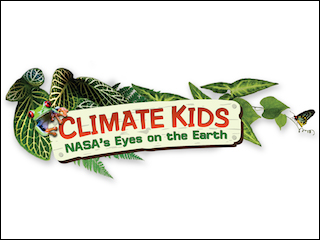
NASA's Climate Kids
NASA’s Climate Kids website brings climate science to life with fun games, interactive features and exciting articles.

Climate Change Lessons: JPL Education
This collection of climate change lessons and activities for grades K-12 is aligned with Next Generation Science and Common Core Math Standards and incorporates NASA missions and science along with current events and research.

NASA Wavelength
This reviewed collection of NASA Earth and space science resources is for educators of all levels: K-12, higher education and informal science education. Find climate resources in the collection at the following link, which can be filtered by audience, topic, instructional strategy and more.

NASA's Goddard Institute for Space Studies: STEM Educator Resources
This page contains high school and undergraduate instructional modules (PDFs and YouTube videos) developed as part of NASA GISS's Climate Change Research Initiative.

NOAA: Teaching Climate
This website contains reviewed resources for teaching about climate and energy.
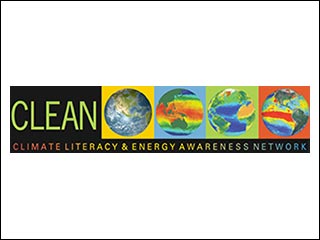
Climate Literacy & Energy Awareness Network
The CLEAN project, a part of the National Science Digital Library, provides a reviewed collection of resources to aid students' understanding of the core ideas in climate and energy science, coupled with the tools to enable an online community to share and discuss teaching about climate and energy science.

Living Landscapes Climate Science Project
Funded by NASA, the Living Landscapes Climate Science Project is a comprehensive set of culture-based climate science educational resources for native communities. Learn more about NASA's role in developing the curriculum.

U.S. Department of Energy Education Resources
The D.O.E. provides a collection of energy fundamentals videos, K-12 education resources, Spanish content, and more.

Earth Science Week: Education Resources
Whether you’re an educator or a student, take advantage of a wealth of instructional and learning tools, from free online resources to posters, disks, and lesson plans.
Recent News & Features

Ask NASA Climate
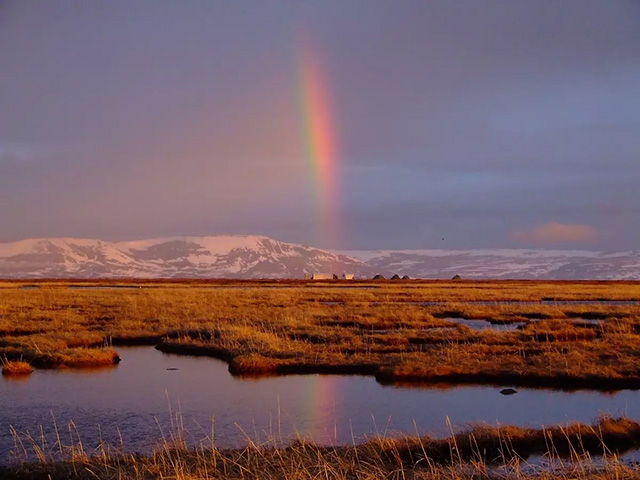
images of change

- Teaching secondary
- Lesson plans
- Secondary lesson plans - upper-intermediate B2
Climate change
In this integrated skills lesson, students will work on the topic of climate change, particularly considering how it affects the lives of inhabitants of a low-lying island in the Pacific.

Introduction
In this lesson for teenagers and adults, students will discuss the topic of climate change, use expressions to make predictions and write a summary, watch a short video and answer questions, then consider and discuss how climate change has affected where they live, and how it may affect where they live in the future.
The lesson has been designed to be used in classrooms with an internet connection and facilities for viewing video, and also classrooms without these facilities.
- To develop integrated skills: listening and speaking and writing around the topic of climate change
- To develop skills for predicting and summarising audiovisual content
Age group :
Teenagers and adult learners
CEFR B2 and above (the lesson could also be used with students who have a strong intermediate level)
Option A (watching the video in the classroom)
60-75 minutes
Option B (students watching the video at home)
15 - 20 minutes in first lesson
30 - 40 minutes homework
20 - 30 minutes in second lesson
Materials :
The teacher's notes and student worksheets are available to download in PDF format below
- Log in or register to post comments
Research and insight
Browse fascinating case studies, research papers, publications and books by researchers and ELT experts from around the world.
See our publications, research and insight
Editorial: House antisemitism bill would stymie free speech and wouldn’t make students safer
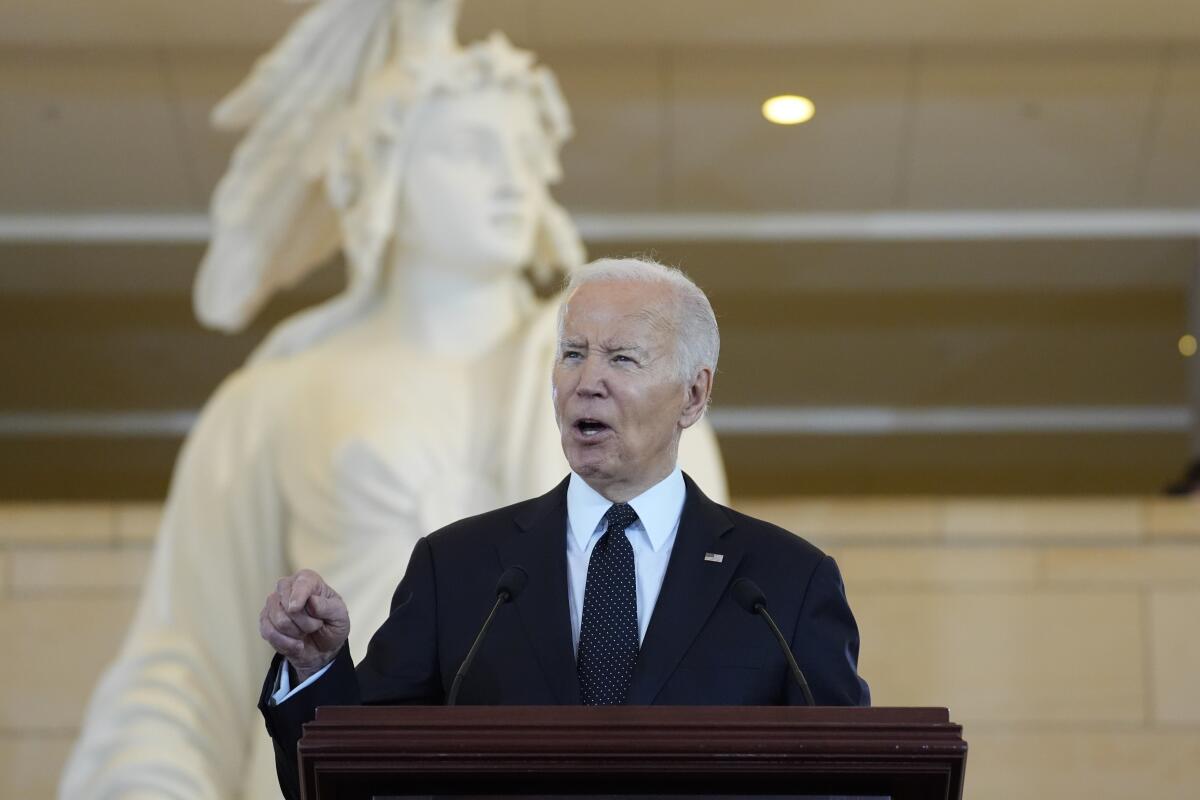
- Show more sharing options
- Copy Link URL Copied!
With campus protests against the war in Gaza as a backdrop, President Biden last week rightly denounced incidents in which “Jewish students [were] blocked, harassed, attacked while walking to class.” Such actions are appalling even if they involve a minority of protesters.
Meanwhile, the U.S. Department of Education released updated guidance for educational institutions about compliance with Title VI of the Civil Rights Act, which prohibits discrimination on the basis of race, color or national origin in programs receiving federal financial assistance, a statute the department interprets as protecting Jews, Muslims and Sikhs. The latest guidance includes a description of situations in which Jewish students are targeted — for example, a complaint that a dormitory room door was defaced with swastikas.

Opinion: Today’s protests are tamer than the campus unrest of the 1960s. So why the harsh response?
College presidents in the Vietnam era would have thanked their lucky stars to face the relatively low disruptions caused by student movements in 2024.
May 14, 2024
Biden’s remarks and the Education Department’s decision to issue updated guidance are appropriate responses to the concerns of Jewish students. Not appropriate — in fact, arguably unconstitutional — is a bill overwhelmingly approved by the House that would have the Education Department use an expansive definition of antisemitism that could chill political speech.
Although it received significant support from Democrats , the Antisemitism Awareness Act was brought to the floor by Speaker Mike Johnson (R-La.) and must be seen as part of election-year efforts by Republicans to portray Biden and the Democratic Party as soft on anti s emitism.

Opinion: Have we learned nothing? The protester’s taunt, ‘Go back to Poland,’ is grotesque
Jewish collective trauma, like that of the Palestinians, is undeniable. One shouldn’t have to go to Treblinka to be reminded of this.
May 6, 2024
The problem with the Antisemitism Awareness Act is that it directs the Education Department to “take into consideration” the working definition of anti s emitism promulgated by the International Holocaust Remembrance Alliance when determining whether there has been a Title VI violation. That definition offers examples of what everyone would regard as antisemitism. But it also gives as examples of antisemitism criticisms of Israel that, even if they are unfair, are protected speech.
For instance, the IHRA definition provides these examples as antisemitism: “denying the Jewish people their right to self-determination, e.g., by claiming that the existence of a State of Israel is a racist endeavor” and “applying double standards by requiring of [Israel] a behavior not expected or demanded of any other democratic nation.”

Granderson: The chaos in Congress is more dangerous than the protests on campuses
House Republicans’ antisemitism law is political theater at a moment when issues need real debate.
May 3, 2024
Israel is a member state of the United Nations and is not going away, nor should it. But some people, including college students, believe that Israel should be replaced by a secular state not tied to any religion or ethnicity. Expressing or debating this idea isn’t the same as spewing hatred against Jews.
Even more susceptible to abuse is the notion that it is antisemitic to subject Israel to double standards “by requiring of it a behavior not expected or demanded of any other democratic nation.” Does this mean that a student or professor is guilty of antisemitism for criticizing Israel but not other democratic nations?

Editorial: Enough already. Not all criticism of Israel is anti-Semitism.
Freedom of speech on college campuses is under enough pressure without the federal government adding to the problem by threatening to withdraw funding to punish people for expressing their political opinions.
June 8, 2018
Rep. Jerrold Nadler (D-N.Y.), describing himself as a “a deeply committed Zionist who firmly believes in Israel’s right to exist as a homeland for the Jewish people,” nevertheless opposed the legislation . Agreeing with the American Civil Liberties Union , Nadler warned that “if this legislation were to become law, colleges and universities that want to avoid Title VI investigations, or the potential loss of federal funding, could end up suppressing protected speech criticizing Israel or supporting Palestinians.” Moreover, he added, “it could result in students and faculty self-censoring their political speech.”
The Education Department has said that it considers the IHRA definition in some of its investigations in determining whether there is discriminatory intent. But it also has said that an antisemitic act “does not violate Title VI merely because . . . it involves an example of antisemitism contemplated by the IHRA.” In enforcing Title VI, the department tries to determine if there is pervasive conduct that creates a hostile learning environment.

Column: Antisemitism is not new — certainly not in Los Angeles
Antisemitism is as old as time. In Los Angeles, prejudice against Jewish people took on new and more public forms in the 1920s and 1930s and beyond.
Jan. 5, 2024
Some might argue that adopting the House bill wouldn’t matter because the Education Department already takes the IHRA definition into account. But both supporters and opponents of the Antisemitism Awareness Act think that it would make a difference. It would — but in a negative way. And enshrining the definition in federal law would make it harder for a future administration to decide that the definition isn’t useful.
Protecting all students from harassment and intimidation on the basis of their identity is a vital objective. But it can and must be accomplished without infringing on freedom of speech.
More to Read

Jewish families say anti-Israel messaging in Bay Area classrooms is making schools unsafe
May 10, 2024

Masked student protesters could face felony charges under anti-KKK law, Ohio attorney general warns
May 8, 2024
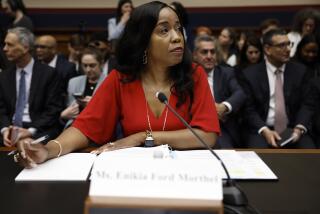
Berkeley schools chief grilled by Congress on claims of rampant antisemitism in K-12 classrooms
A cure for the common opinion
Get thought-provoking perspectives with our weekly newsletter.
You may occasionally receive promotional content from the Los Angeles Times.
The Los Angeles Times’ editorial board determines the positions of The Times as an institution. It operates separately from the newsroom. You can read more about the board’s mission and its members at About The Times Editorial Board .
More From the Los Angeles Times
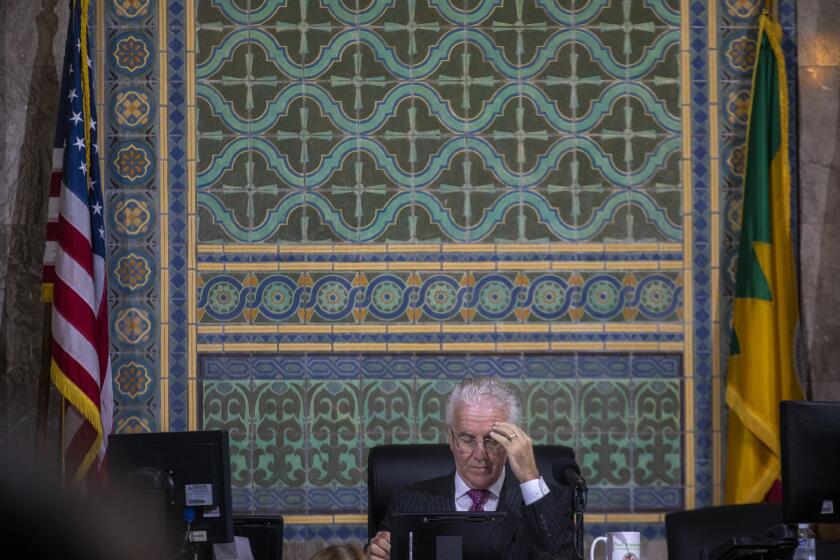
Editorial: L.A. City Council just proved it can’t be trusted to fix itself
May 15, 2024
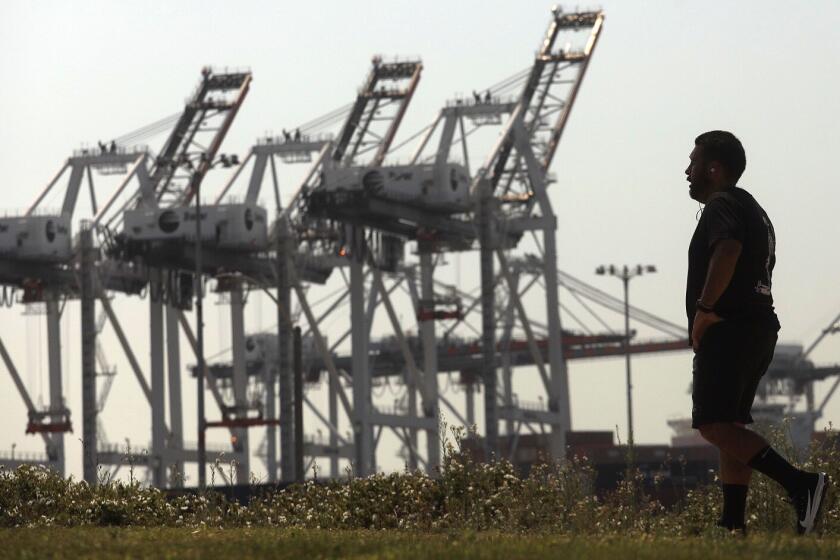
Editorial: SoCal air quality officials haven’t acted to cut port pollution. They escaped to a desert resort instead
May 13, 2024

Commentary: Being a porn star doesn’t make Stormy Daniels a liar. Trump’s lawyer should have known that
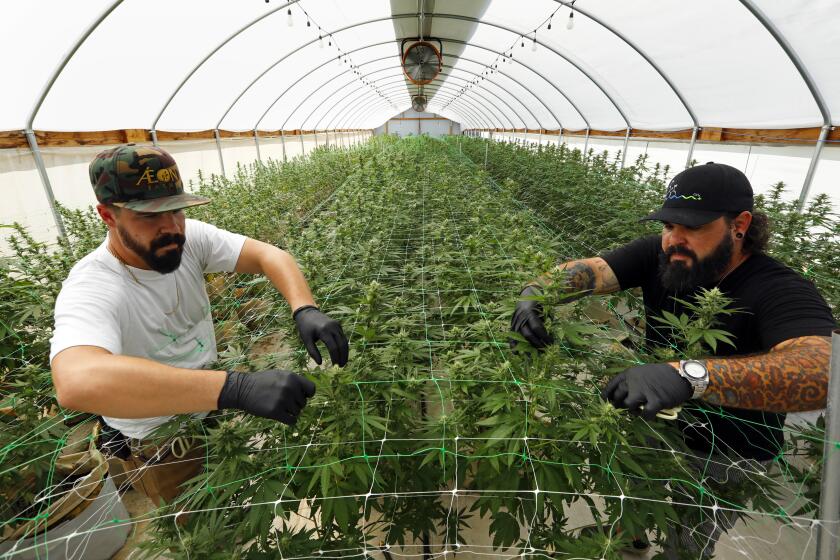
Editorial: Biden’s plan to reschedule marijuana may finally end ‘Reefer Madness’

IMAGES
VIDEO
COMMENTS
This format of Global Warming Speech is useful for students in grades 8-12, as they can explain the meaning, causes, and effects as well as ways to prevent it in a simple language. Good Morning everyone, today I ( mention your name) will share my views on the alarming issue of Global Warming. The concern has only grown due to industrialization ...
Global Warming Speech 500- 700 Words (3- 5 Minutes) 10-Line Global Warming Speech. Causes of Global Warming. Ways to Tackle Global Warming. FAQs. It means a rise in global temperature due to the greenhouse gases in the atmosphere due to human activities and inventions. In scientific words, Global Warming is when the earth heats (the temperature ...
Impact of Global Warming. As the planet is getting hotter, we need to collectively act right now instead of waiting for more. The primary cause of global warming is fossil fuels. Human beings are addicted to burning them which produces coal, oil, greenhouse gases and more. The power plants, cards, and industries produce Carbon dioxide which ...
1. Global warming is the trapping of too much heat from the sun in the earth's atmosphere. 2. Global warming will bring us disaster. 3. To control global warming, it is important to control greenhouse gas emissions. 4. Global warming is causing ocean acidification, threatening fisheries and other species. 5.
Download Long and Short Climate Change Speech Essay in English Free PDF from Vedantu. Earth is the only planet which has variety in weather and climate crucial for survival. But we humans are killing nature to fulfil our need and greed that causes global warming, eventually leading to climate change. Here, we have provided both long and short ...
Global Warming is the gradual rise in the earth's temperature. We cannot blame a particular individual or a country for this cause; it is a collective problem. Global Warming is mainly caused due to the burning of fossil fuels. The burning of fossil fuels leads to the release of greenhouse gases. Greenhouse gases like carbon dioxide, methane ...
Speech on Climate Change. Climate change is a phenomenon that refers to the warming of the planet and the associated shifts in global climate patterns. It is caused by the increasing levels of greenhouse gases in the Earth's atmosphere, which trap heat from the sun and cause the planet's surface temperature to rise.
Greetings to all the teachers and students gathered here. Today, I stand before you to address a matter of urgency and global significance—Climate Change. In my climate change speech, I have tried to cover relevant facts, figures, adverse effects and, importantly, how to save our environment from climate change. Also Read: Essay on Global ...
Climate change describes a change in the typical weather for a region — such as high and low temperatures and amount of rainfall — over a long period of time. Scientists have observed that, overall, Earth is warming. In fact, many of the warmest years on record have happened in the past 20 years. This rise in global temperature is sometimes ...
The PBS NewsHour asked Lise Van Susteren, a psychologist and climate advocate about the best ways to discuss global warming with children. Step 1. Find out what the child has heard. Give a child ...
Climate Change Speech for Students: 1-Minute Speech on Climate Change. A very good Morning to the honourable chief guest, all the faculty members present here and my fellow students. I am [name], a student of class X-A and today, I am honoured to stand before you and express my views on climate change. The high temperatures and unpredictable ...
Climate change (or global warming), is the process of our planet heating up. Scientists estimate that since the Industrial Revolution, human activity has caused the Earth to warm by approximately 1°C. While that might not sound like much, it means big things for people and wildlife around the globe. Unfortunately, rising temperatures don't ...
Underwater farms vs. climate change - Ayana Elizabeth Johnson and Megan Davis. Climate change • Climate change refers to long-term shifts in temperatures and weather patterns. Human activities have been the main driver of climate change, primarily due to the burning of fossil fuels like coal, oil and gas. Watch on.
Climate change describes a change in the typical weather for a region — such as high and low temperatures and amount of rainfall — over a long period of time. Scientists have observed that, overall, Earth is warming. In fact, many of the warmest years on record have happened in the past 20 years. This rise in global temperature is sometimes ...
Speech on Global Warming: Short and Long Speech. Speech is one of the great ways of expressing ourselves. It allows us to put forth and convey our thoughts. This skill can be polished in one's school duration. One such opportunity we get is through ASL or Assessment of Speaking and Listening which is an integral part of the CBSE Class IX and ...
Hundreds of plant and animal species have already experienced changes because of climate change. The American pika, for example, is a small mammal that lives in cool mountainous areas in western North America—in fact, it can die when exposed to temperatures warmer than 78˚F.So as the mountain climate heats up, the pika climbs the slopes in search of cooler habitat.
1. Do a lab. Lab activities can be one of the most effective ways to show children how global warming works on an accessible scale. Ellie Schaffer is a sixth-grader at Alice Deal Middle School in ...
Level: Intermediate and above. Introduction. This lesson is about climate change - and encourages students to think about their attitudes towards the environment. (Interesting fact you could use in the intro - according to Friends of the Earth the UK has 1% of the world's population, yet produces 2.3% of the world's carbon dioxide) This ...
Whether you're an educator or a student, take advantage of a wealth of instructional and learning tools, from free online resources to posters, disks, and lesson plans. Vital Signs of the Planet: Global Climate Change and Global Warming. Current news and data streams about global warming and climate change from NASA.
Invite the children to close their eyes and think about the people and animals all around the world who are affected by climate change. Think carefully about the planet we live in and how we can ...
•Studies have linked global warming and weather disasters. •Its impact is seen around the world. Vocabulary extreme weather events increased global temperatures increased CO2 & greenhouse gases melting polar ice climate disasters grassroots adaptation recovery strategies
Modern global warming is the result of an increase in magnitude of the so-called greenhouse effect, a warming of Earth's surface and lower atmosphere caused by the presence of water vapour, carbon dioxide, methane, nitrous oxides, and other greenhouse gases. In 2014 the IPCC first reported that concentrations of carbon dioxide, methane, and ...
Introduction In this lesson for teenagers and adults, students will discuss the topic of climate change, use expressions to make predictions and write a summary, watch a short video and answer questions, then consider and discuss how climate change has affected where they live, and how it may affect where they live in the future. The lesson has been designed to be used in classrooms with an ...
There's no place for antisemitism in the U.S. But House's Antisemitics Awareness bill goes too far in infringing on free speech.